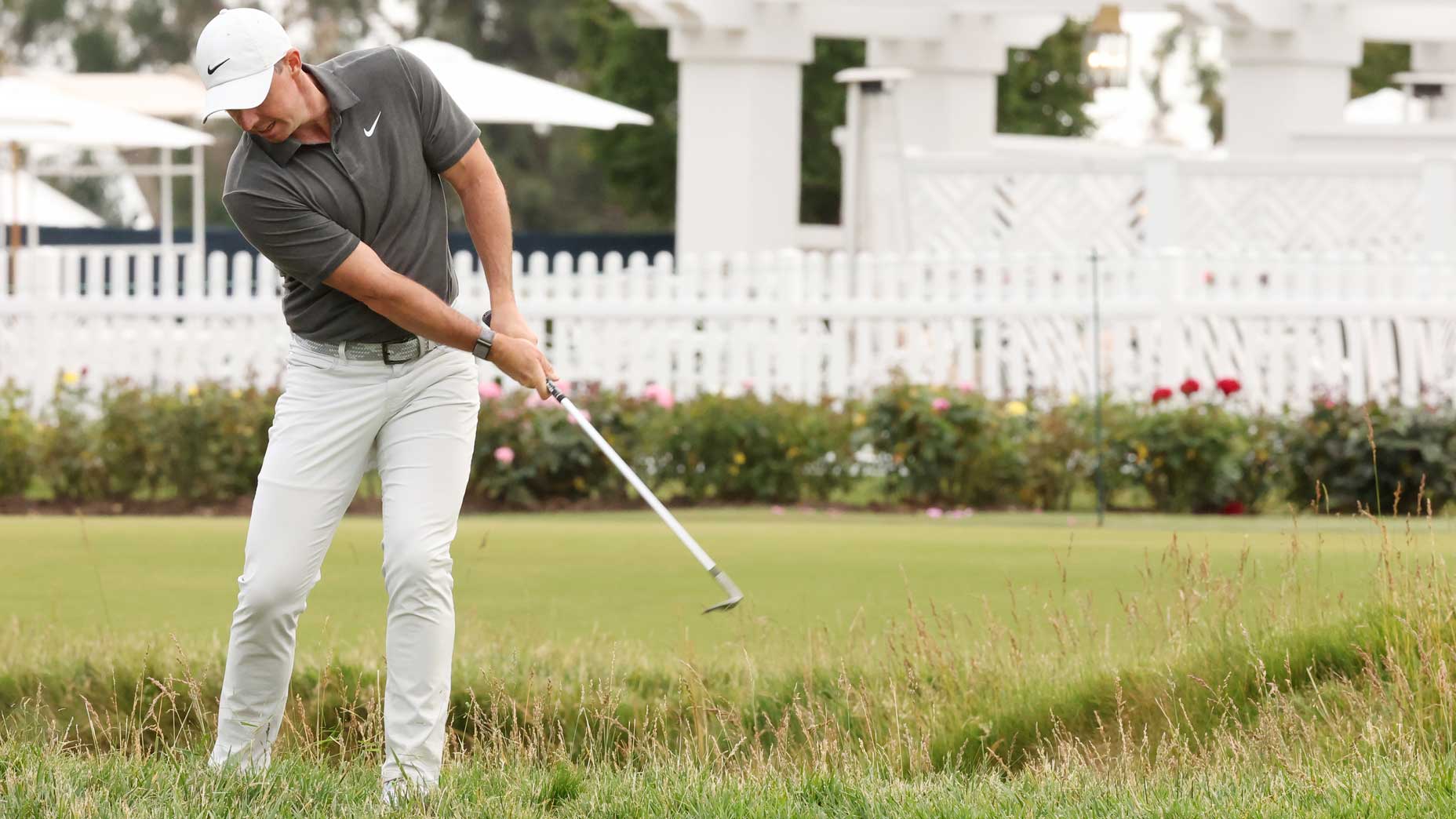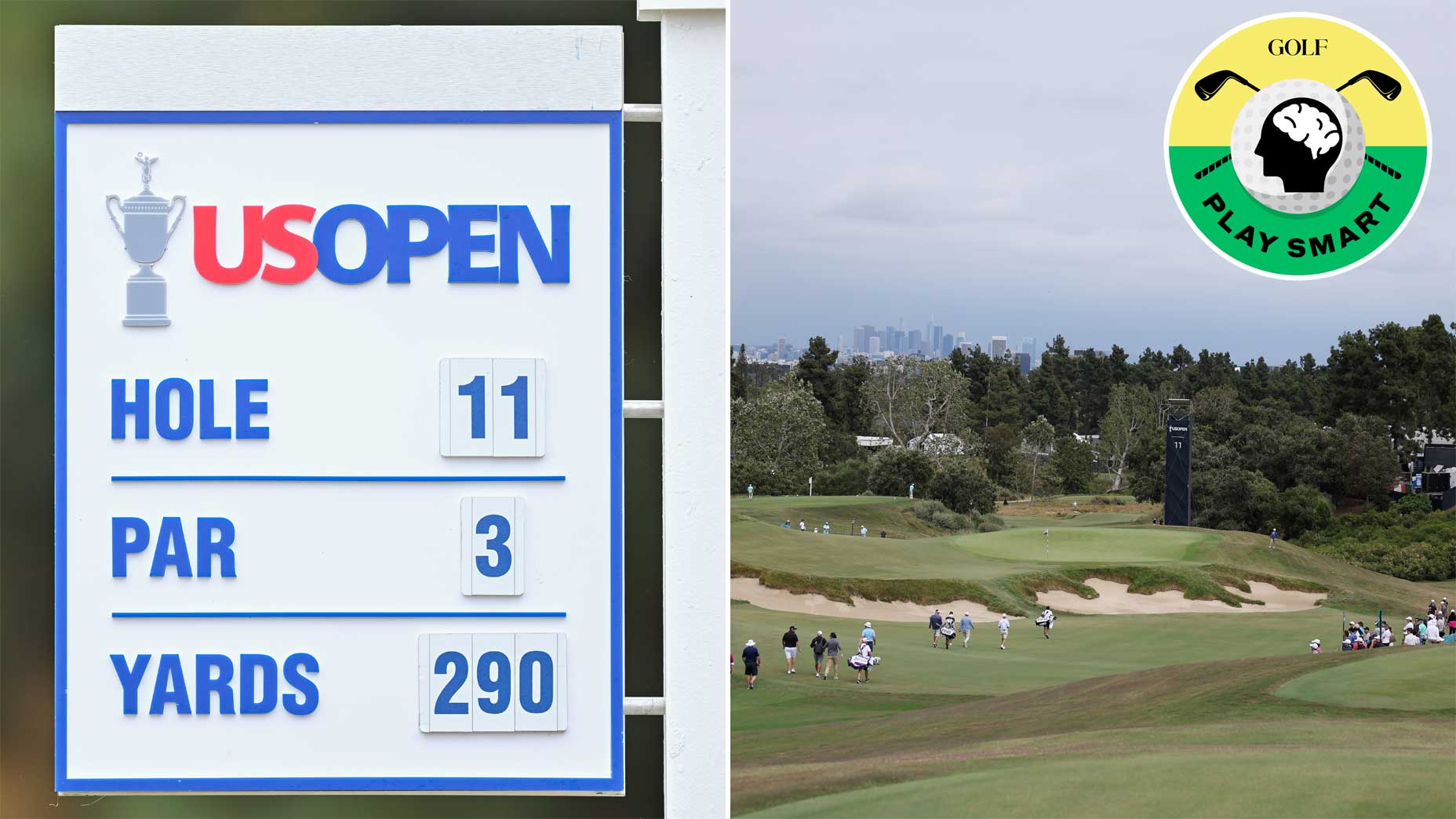While the scores were low on Thursday at Los Angeles Country Club, make no mistake, the course is not easy.
Yes, the pros laid waste to the layout in Round 1 — highlighted by a pair of record-setting rounds from Rickie Fowler and Xander Schauffele — but that’s not a huge surprise. With soft greens on Thursday, coupled with wide fairways and benign weather, the course was ripe for the taking.
How would an average golfer fare on LACC’s 300-yard par-3? The stats aren’t prettyBy: Zephyr Melton
With a scoring average lower than any other round in U.S. Open history, you’d likely assume that there weren’t any shots that made pros look like, well, the rest of us. But that was definitely not the case. There were a number of flubbed chips, flared approaches and big misses. And on No. 18, we even saw a whiff — from Rory McIlroy no less!
The fescue around the bunkers is a bit different than the Bermuda rough in other areas of the course, and it can lead to some difficult lies. With thick blades of grass grabbing at the clubface, things can get dicey when chipping from these areas.
And while recreational players aren’t likely to face conditions quite as tough as what the pros face in major championships, it’s always good to know how to escape these gnarly lies.
GOLF Top 100 Teacher Jonathan Yarwood recently shared a video on how to hit chips from three different lies in the greenside rough (much like what the pros face), and his tips might just save you a few strokes next time you find yourself in a tricky situation.
You get 3 lies in the rough around the green at the US Open, here’s how to deal with ‘em 🙌🏼 #jonathanyarwood #golfswing #jy #golf @GOLF_com @golfmagazine @titleist @golfchannel #teamtitleist @golfdigest #golfdigest pic.twitter.com/30KjxEFa1w
— JonathanYarwood (@JonathanYarwood) June 15, 2023
Ball sitting up
With the ball sitting up in greenside rough, it can be difficult to make proper contact. When it’s sitting up is a little in the rough, the ball has a tendency to hit high on the face. This is obviously not the sweet spot of the club, so you need to make some adjustments to make solid contact.
“What you don’t want to do is start chopping down on it,” Yarwood says. “So lock your arms together, hover the club just behind the ball and just use your shoulders keeping your arms pretty straight.”
Ball halfway down
When the ball is nestled in the rough but not quite buried, you won’t risk hitting too high on the face, but it can be hard to make good contact. For the best results, open the face of the club a bit and then make a sharp wrist hinge on the way back.
“Release your [trail] hand under,” Yarwood says. “Just snap it.”
Releasing the trail hand at impact should produce enough speed to cut through the rough and pop the ball out toward the cup.
Ball buried
Buried lies in the rough can be tough to predict, but it’s important you make a confident swing to ensure you get the ball out. Much like the technique for the chip above, you want to hinge your wrists sharply on the way back and then release your trail hand to cut through the thick stuff.
“Really try to hit into the stuff, almost like a bunker shot,” Yarwood says. “As it’s buried, you dig down on it a bit more.”











